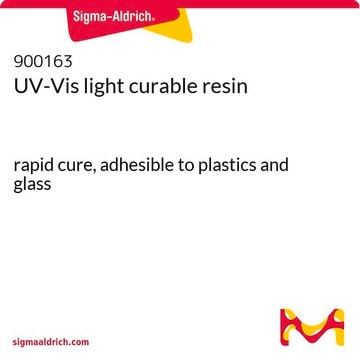915556
HNMB
≥98%
Synonyme(s) :
4-[(E)-[(2-hydroxy-1-naphthalenyl)methylene]amino]-3-methyl benzoic acid, Aggregation-induced emmision (AIE) materials, Mechanochromic luminescent (MCL) materials
Sélectionner une taille de conditionnement
Sélectionner une taille de conditionnement
About This Item
Produits recommandés
Niveau de qualité
Essai
≥98%
Forme
solid
Couleur
white
Pf
292.9 °C
Absorption UV
λ: 317 nm Amax
λ: 443 nm Amax
Chaîne SMILES
N(=C\c2c3c(ccc2O)cccc3)/c1c(cc(cc1)C(=O)O)C
InChI
1S/C19H15NO3/c1-12-10-14(19(22)23)6-8-17(12)20-11-16-15-5-3-2-4-13(15)7-9-18(16)21/h2-11,21H,1H3,(H,22,23)/b20-11+
Clé InChI
HCGGUBXKKWXERU-RGVLZGJSSA-N
Catégories apparentées
Application
In biology, pressure could direct the folding-unfolding of protein molecules, guide blood stream and even control the cell migration. The complexity with these cases makes the monitor and measurement of pressure from conventional force sensor based on classical mechanics impractical. Based on mechanical sensitive materials with ingenious design at the molecular level, a new way to detect pressure is developed. And mechanochromic luminescent (MCL) materials have formed a vital part of such materials. They are intentionally endowed with the ability to change luminescence property (e.g., emission wavelength, emission intensity and lifetime) under mechanical force, which can be readily detected by naked eyes or instruments. As molecule-based sensors, they are compatible to various flexible substrates and arbitrarily curvilinear surfaces, facilitating many applications.
Code de la classe de stockage
11 - Combustible Solids
Classe de danger pour l'eau (WGK)
WGK 3
Point d'éclair (°F)
Not applicable
Point d'éclair (°C)
Not applicable
Faites votre choix parmi les versions les plus récentes :
Certificats d'analyse (COA)
It looks like we've run into a problem, but you can still download Certificates of Analysis from our Documents section.
Si vous avez besoin d'assistance, veuillez contacter Service Clients
Déjà en possession de ce produit ?
Retrouvez la documentation relative aux produits que vous avez récemment achetés dans la Bibliothèque de documents.
Filtres actifs
Notre équipe de scientifiques dispose d'une expérience dans tous les secteurs de la recherche, notamment en sciences de la vie, science des matériaux, synthèse chimique, chromatographie, analyse et dans de nombreux autres domaines..
Contacter notre Service technique






